#Linear Tube Audio
Explore tagged Tumblr posts
Text


Linear Tube Audio: Aero D/A Processor
Description: R-2R D/A processor based around the 18-bit Analog Devices AD1865 chip, with 12SN7/6SN7 output tubes and no filters, feedback, or oversampling. Formats: Up to 24/192 PCM. Output voltage: 2.2V RMS RCA, 4.4V RMS XLR. Digital inputs: USB, S/PDIF on RCA, and TosLink. Output impedance: 70 ohms unbalanced (RCA), 140 ohms balanced (XLR). Power consumption: 32W in operation, 7W standby. Dimensions: 17" (431mm) W × 3" (76mm) H × 10" (254mm) D. Weight: 15lb (6.8kg). Manufactured in USA. Price: $3,950.
#Audiophile#Recommended#Linear Tube Audio#albumcover#music#highend#hifi#audio#cdplayer#cdcollection#record#cdjunkie#vintage#cd#vintageaudio#sacd#cdcollector#hiresaudio#mp3#compactdisc#dac#flac#compactdisccollector#digitalaudio#cdcover#cdalbum#compactdisc collection
0 notes
Text
Talk about Vinyl
I often mention my system is built around vinyl. But have I really got into my experience with it? What it is like?
Well first lets get technical:
I would like to address the skipping, clicks, pops and noise issue. 95% of the time I do not get any of that. On some of my really old discs yes there is a bit of noise, but I do not mind it. On the rest I keep my LPs clean. By clean I mean I wipe them with special fluid and a discwasher pad usually before every play. Noise is dirt. No dirt no noise. There may be some residual tape noise down 60 dB, but it is overwhelmed by the music.
Actually on my really old records what bugs me is a poor mix or excessive compression.
Lower frequencies are sometimes but not always summed between the stereo tracks. Pick a number and mix the two sides together. At 100 Hz the wavelength is 11 feet (3.35 m). If your speakers are 11 feet apart or less you cannot tell where that sound is coming from. A drum has the higher harmonics and sounds that give you the location information. A single low frequency is unlocatable. So mixing the bass has no serious effect.
The treble of an LP depends on the LP and the way it was recorded and mastered. The equipment can respond to far over normal human hearing ranges. I have at least two Phono cartridges that respond to over 43 kHz. The old quadraphonic systems used that for 4 channel LPs.
Dynamic Range is a real limit, but a high quality LP can have 50, even 60 dB of DR. 60 dB is a factor of a million. That is a lot. CDs have more in 96 dB, streams can have more as well. It is a very rare CD or stream that uses very much of it. Current music is usually very compressed. What that means is most of the DR is not used and the signal is kept loud. Classical and Jazz LPs often have excellent DR. I have a direct to disc album that has DR at the LP limit and it is amazing. I have that nutty KODO CD that uses all the the available CD dynamic range but it actually demonstrates you don't need that much.
Audiophile LPs are usually chosen for good DR as well as the other qualities.
OK so that is out of the way.
When I want to play an Album it is usually because I want to have a quiet listen to music. I mean I want to be quiet, the music may get turned up. It takes an hour for my ARC tube amp to warm up and get happy. I may warm it up with a CD or a stream, but then I pull out an LP.
I may have an old tune in my head. I may want to just have another listen to a symphony or Jazz number. I may want to immerse myself in the full width and depth of audiophile nirvana. What to play? I flip through the musical milk crate and see oh here is something.
I pull out the album. I may be Sting's Soul Cages, or Boz Scaggs "Memphis", or Steely Dan's Aja. I choose. I pull it from the jacket and the slip cover and look at the label for what side is up. Do I want a particular song, or the whole thing front to back? Often I have a particular song in mind, but I will usually play the whole thing. The artist had an intention. Would you read a novel from the middle and skip around?
I put it on the player and cue it to start spinning. Always place the record on and pick it off a not moving platter. I mean, do you want to scratch it? Give the brush a spritz of fluid and wipe the record down. Cue the lead in track, set the volume and go sit in the good spot.
Listen. Somebody is sharing a dream or nightmare, or just a bit of their life. Often there are tiny little details hidden in the music to tease you. Sometimes it is just a whole world around you.
In about 20 minutes you have to get up and flip it. I do not mind. Moving is good for you. Maybe fix a drink, or freshen the one you got. There is a whole other side to go.
More often than not I think of another album while the first plays. I get in the mood for more. This usually goes on for hours. That is what it is for.
Audio Research SP 14 preamp, Russian 6N23Pi tube in the phono section.
ARC Classic 60 amplifier with a full complement of Electro-harmonix tubes.
Phase Linear 8000a II linear tracking turntable with AT 7V cartridge
Whatever album I feel like.
#audiophile#high end audio#vinyl#turntables#audio technica#phase linear 8000a#tubes and transistors#vinyl records#LPs
6 notes
·
View notes
Text
GEAR
Microphones:
Sure sm57
Sure sm58
Audix i5
Sure Beta 52
Blue Snowball
Behringer C-2 (pair)
Samson C01
Rode NT1A
Hardware:
Scarlett 18i0 audio interface
Mackie 1402-VLZ PRO 14 channel mic/line analog mixer
Guitar amps and pedals:
Helix HX STOMP
Ibanez Turbo Tube screamer
Guitars:
Fender GC140SCE Concert Acoustic-Electric
Yamaha FX335C Dreadnought Acoustic-Electric
Ovation 1311 Natural Acoustic
Fender Nashville Telecaster
Fender Squire Bullet Telecaster
Fender Squire Jazz Bass
Mitchell MU40 Soprano Natural Ukulele
Yamaha CGS 102A Classical Guitar
Keyboards:
Nektar Impact LX61+
Roland U-20
Drums and percussion:
1 big tambourine
1 small tambourine
LP Medium twist shakers
Simmons Titan 50 electronic drum set
Sound Monitoring:
JBL Professional Linear Spatial Reference 3 Series powered studio monitors (pair)
Sony Professional MDR-7506 studio headphones
Sennheiser HD 201 studio headphones
KRK Classic 5 studio monitors (pair)
Computers and visuals:
Apple MacBook Pro 13 inch
Dell flat panel monitor
DAW/software:
Logic Pro X
Pro Tools 12
GarageBand
Avid/Apple/Native Instruments/SoundToys/FabFilter/Waves plugins
Helix HX Edit
Plugins:
Digital EQ’s:
Waves V-EQ4
Fabfilter Pro-Q
Digital Reverbs:
Waves Abbey Road Chambers
Waves H-Reverb Hybrid Verb
Waves Renaissance Reverb
Waves Manny Marroquin Reverb
Relab Development LX480 Reverb
Digital Compressors:
Waves Renaissance Compressor
Waves CLA-3A Compressor/Limiter
Waves Smack Attack
Waves DeEsser
Extras:
Waves SSL G-Channel
Waves Nx Ocean Way Nashville
Waves Z-Noise
Waves WLM Plus Loudness Meter
Waves Tune Real-Time
Waves Vocal Bender
Waves Torque
Waves CLA Bass
Waves Abbey Road J37 Tape
SoundToys Echoboy
VST’s:
Spectronics Keyscapes
Native Instruments Battery
Toontrack EZdrummer 3
Native Instruments Kontakt Electric Guitar
Accessories/miscellaneous/other studio features:
4 XLR cables
4 1/4 inch jack cables
Power supply cables
USB outlet strip
High speed internet and free WIFI
Pencils, pens and paper
Wireless printer available
5 mic stands
Shock mount, pop filter, and 3 windscreens
HEAROS Ultimate Softness earplugs
Mini Samsung T.V. with Roku entertainment
RIF6 electric record player with built-in speakers
Dean Markley Pro Mag humbucker pickup
Culilux 1/4” audio splitter
Rioddas external ODD&HDD disc drive
Pack of CDs for burning
Guitar pick maker with appropriate paper
3 microphone clips
Alesis sustain pedal
Radial PRO-DI passive direct box
DeltaLab digital metronome
AKAI MPD218 beat pad
GiveBest electric heater
Behringer ULTRAACOUSTIC AT109 15-WATT acoustic guitar amplifier
OWC thunderbolt USB-C dock
APC surge protector
MOONGEL damper pads
Pick holder filled with guitar picks (floppy and hard) and a set of thumb picks
2 capos and clip on tuner
KORG TM-50 combo tuner and metronome
Mackie 1402-VLZ PRO 14 channel mic/line analog mixer
NEXIGO web cam
Big Knob passive monitor controller
The Bowman Studios, Dallas, Texas
Producers: Mason Bowman
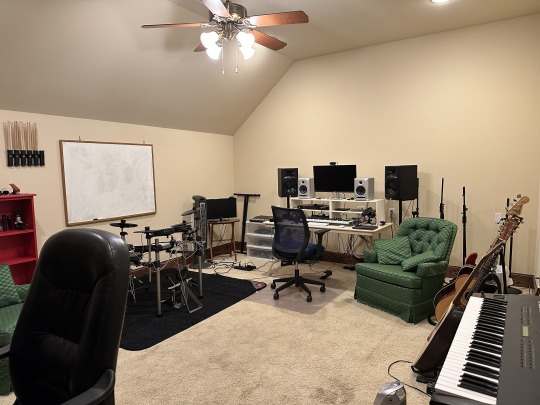
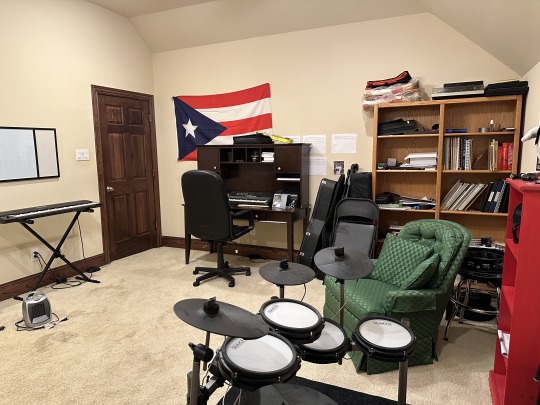
2 notes
·
View notes
Text
The Power Behind Perfect Sound: Choosing the Right Headphone Amplifier
Experience exceptional sound with Accustic Arts. We are your partner for high-quality audiophile audio components. Our range includes everything you need for a perfect sound experience, from preamplifiers to CD players and integrated amplifiers. Let our experts advise you and discover how you can take your audio system to the next level. Discover our selection of high-quality preamplifiers, renowned for their precise sound reproduction and outstanding performance—ideal for audiophile demands and fine-tuning your hi-fi system.

Enjoy your music in the best quality with our first-class CD players. Our devices offer exceptional sound fidelity and reliable playback of your favorite albums. Our integrated amplifiers combine power and precision for an unrivaled listening experience. They are the perfect choice to give your speakers a powerful and clear sound. Stereo headphone Amplifier Our headphone amplifier is a low-powered audio amplifier designed to drive headphones worn on or in the ears instead of loudspeakers in speaker enclosures. Stereo headphone Amplifier Low-impedance headphones may not be loud enough—and might even incur clipping (distortion) from a portable device; thus, for these headphones, the user experience can be significantly improved by adding a headphone amp. Headphone amplifiers are usually found embedded in electronic devices with a headphone jack, such as integrated amplifiers, portable music players (e.g., iPods), and televisions. Powerful Amplifier A powerful amplifier (PA) converts a low-power signal to a higher-power one. Two common examples are audio amplifiers, used to drive loudspeakers and headphones, and RF power amplifiers, such as those used in the final stage of a transmitter. An amplifier can be a separate piece of equipment or an electrical circuit within another device. Amplification is fundamental to modern electronics, and amplifiers are widely used in almost all electronic equipment. Amplifiers can be categorized in different ways. One is by the frequency of the electronic signal being amplified. Power Amplifiers Power amplifiers are divided into classes based on their characteristics. Classes A, AB, B, and C depend on their conduction angle, which is the number of degrees in a cycle during which the amplifying device conducts. Classes D and E are switching amplifiers. Classes D, DG, and H are also common audio amplifiers similar to Class AB but using different techniques to improve efficiency. A Class A amplifier has a 360o conduction angle. It is the most linear, meaning the output signal is the best input representation. Subsequent classes are increasingly efficient and decreasingly linear. Our class D amplifiers use pulse-width modulation (PWM) to produce a rail-to-rail digital output signal with a variable duty cycle to approximate the analog input signal. They are highly efficient because the output transistors are always fully turned on or off.
Read More Resources
Hi-Fi Awards 2025 TUBE PREAMP V
Review PREAMP V in stereo magazine
0 notes
Text
Wells Audio V8 Level II Tube Headphone Amplifier Review
Wells Audio V8 Level II Tube Headphone Amplifier Once again Jeff Wells has shown that he can make a great amplifier whether solid-state or tube, and the Wells Audio V8 Level II Tube Headphone Amplifier has proven to be one of the better OTL amplifiers I have heard, with excellent detail, solid imaging, a linear tonal balance, a large soundstage, fantastic dynamic range and above all musicality.…

View On WordPress
0 notes
Text
The Cheapest and Simplest Audiophile Headphone Amp

This small amplifier finds its use not only with headphones for listening to your favorite tunes in good quality or for playing the electric guitar without causing any annoyance to your close ones.
It can also amplify line-level audio if any of your audio system components have too low sensitivity or output levels.
Our amplifier also has a low output impedance and a reasonably high input impedance—50 kilo-ohms. So, the amplifier serves dual purposes as a buffer with gain and as a power amplifier for headphones.
The design is inexpensive and quite compact, so it can be used in almost any project. The bipolar power supply is not required; any stabilized power source or 12 to 18-volt battery is sufficient.
This amplifier has a linear stereo input, not a Hi-Z instrumental input, for connecting an electric guitar. Therefore, if you play the guitar, you will need an additional preamp.
Headphone amplifiers are assembled using transistors, tubes, and microchips. The tubes add a pleasant warmth to the sound by adding even harmonics to the signal. We have already looked into this in a post on the DIY tube amplifier.

That sweet little amplifier is an excellent buffer for a hi-fi audio system. It can happily work with an electric guitar. But its output power is not enough for headphones. (Yet it can be an excellent preamp for our headphone amp today.) A tube amplifier needs to be powered with an AC transformer, which is not a portable solution.
Discrete transistor amplifiers can be decent, but they contain many elements. They need to be carefully configured, pairs of transistors with the same parameters must be picked, and a large quantity of high-quality capacitors must be used.
Some audiophiles say the best sound is created only with special carbon-fiber resistors. If the influence of the design and materials of capacitors on the quality of sound reproduction is objectively proven and has been measured, valuable parameters for resistors, from a technical standpoint, are accuracy and temperature stability. Metal film resistors are primary candidates, as they are known for this feature.

If you didn't already know, low-power carbon resistors are usually beige (modern film) and brown (vintage composite), and metal film resistors are often blue. But there are many exceptions.
Be that as it may, music is for pleasure. Music is an art, and this applies not only to composing and performing but also to playing back, listening, and making musical instruments and equipment. Therefore, subjective opinions and feelings must be respected because music is just about them. And the components should fit the person who creates the amplifier and the person who will listen to it.
Any way you approach it, creating transistor and tube amplifiers costs money and time, takes up space, requires skills, and sometimes requires special equipment for adjustment. Integrated circuits make everything much more compact, accessible, and simpler.
And if we talk chips for audio processing, first, we need to discuss operational amplifiers.
By the way, LM386 is an op-amp, too, designed to work with a loudspeaker or a headphone. I'm sure you've already used LM386 on your devices. Clearly, it is not at all an amplifier for high-quality sound reproduction through headphones or a small speaker.
Although, oddly enough, with a large 12-inch guitar speaker (not the 80-watt Celestion Seventy 80, better something like a 25-watt Greenback), the LM386 can sound very good in the room, it has just enough volume to be used as a bedroom amplifier.

But guitar amplification is a totally separate thing. You need to amplify specific guitar frequencies; the LM386 can handle this fine. And when you need to reproduce with high fidelity the sound of an entire orchestra, a rock band, or birds chirping in the forest, you'll need something bigger.
So, we will use NE5532.
The best op amp for audio
"There is probably no music on the planet that has not passed through a hundred or more 5532s on its way to the consumer." Douglas Self, British electronics engineer.

Please do not confuse NE5532 for NE532. The NE532 is just a complete analog of the good old LM358, developed in 1972 as an industry standard for operational amplifiers.
Surprisingly, the LM358 circuitry is built into many other integrated circuits. For example, the TL494 PWM controller contains two error amplifiers constructed according to the LM358 diagram.
We often use the LM358, sometimes even for audio processing, but in most cases, we still prefer the TL072 and NE5532. Why is that? This is precisely what we will talk about today.
NE5532 are considered operational amplifiers for enthusiasts, and rightfully so, one can find them in even the most expensive and prestigious audio equipment. From 1979 to 2007, that is, for 28 years, NE5532 was unattainable—the best in class! And then LM4562 came along.
There are several more expensive and more advanced operational amplifiers for audio, including those assembled on a printed circuit board from discrete components rather than an integrated chip design. After all, progress never stops, and there is no limit to perfection.
In fact, in the vast majority of cases, the characteristics of the NE5532 are more than sufficient for high-quality audio signal processing. This is confirmed by its application in various professional music and sound recording equipment and household high-fidelity audio systems.
This is all thanks to the fact that the NE5532 has very low noise, extremely low harmonic distortion (THD) with an appropriate switching circuit, and, very significantly, a high slew rate. It is equal to 9 V/uS versus 0.3 9 V/uS for the LM358.
It would seem that even LM358 has a gain bandwidth of 1 MHz (according to datasheets from different manufacturers, from 700 to 1200 kHz). However, gain bandwidth does not mean the effective gain band but just the frequency at which the unity gain is preserved.

When the voltage is amplified by +20 decibels, i.e., 10 times, the LM358's gain begins to decline already at a 10 kHz frequency. In contrast, for the NE5532, this frequency is 200 kHz.

Why does an audio signal need wide bandwidth anyway? An average human cannot hear sounds with a pitch above 20 kHz. Besides frequency, the attack of sound matters. The wave's shape matters, too, and to avoid distorting it, you need a bandwidth 10 times wider.
So, our amplifier is called "47" and consists of two identical channels - left and right. Each channel is built on a dual NE5532 operational amplifier. Resistors R1 and R2 divide the supply voltage in half, forming a common virtual ground for both channels.

Op-amp U1A is used in a non-inverting configuration: the input signal is applied to the non-inverting input, and resistors in the feedback loop set the gain from the output to the inverting input.
In our case, the coefficient equals (4.7 + 10) / 4.7 = 3.13, 9.9 dB.
Operational amplifier U1B is connected as a repeater with unity gain and simply doubles the channel output current. Resistors R8 and R9 limit the current to protect the headphones and amplifier.
The second channel is assembled according to the same diagram as the first one on a separate U2 chip. If you don't need a second channel, you can build just one using one chip.
youtube
This amp sounds very clean. Unlike guitar equipment, it does not alter the sound but simply reproduces the input signal with high quality.
So, high fidelity is not always difficult and expensive. Sometimes, you can achieve excellent results simply by finding a suitable scheme.
0 notes
Text

“Breath, breath, breath, wind, wind, wind”
2024.3.30 - 3.31 6okken and 森と湖の楽園.
Installation Variable
Daisuke Kawashima,Gabi Schillig,Hazuki Ohta,Hyejeong Yun,Reo Anzai,Soh Souen
物質に硬いもの、強いもの、柔らかいものがあるように、音にも硬いもの、強いもの、柔らかいものが存在するのでしょうか。
物質 のように表面に触れることのできない「音」と、それを受容する「聴覚」は、私たちの空間とどのように関わっているのでしょうか。
この作品を制作したチームは音楽、サウンド、ビジュアルアート、ドキュメンタリー映画、空間、パフォーマンスなどの異なる分野 で研究、制作活動をしているメンバーで構成されています。
そしてそんな私たちの共通言語を探すうちに、ソフトノイズという言葉 にたどり着きました。
ノイズを、視覚、聴覚、触覚の垣根を越えて人工的に作り出されたもの、例えば街の騒音やスクリーンの音と定義するならば。ノイズというものを、私たちの身体にとってより身近な” もの” や、” 環境” に変容させることはできるのでしょうか。
フェスティバル会場の森は、自然と人工物が混在しています。そしてアルミニウムチューブと木々からなるリゾーム構��は、まるで生物のように互いに巻きついています。
このチューブによって増幅された声や呼吸、表面の音は、私たちの集合体を構築していきます。そしてソフトノイズはそれらの関係性の曖昧な境界に存在しているはずです。
| Concept | Just as there is hard, strong and soft matter, do hard, strong and soft sounds exist? How does "sound," which cannot be touched through surfaces like material, and the sense of hearing that accepts it, relate to our space?
The collective is composed of artists from various fields, such as music, sound, visual art, documentary film, space and performance. As we searched for our common language, we came up with the term soft noise.
If we define noise as something artificially created that transcends the barriers of sight, sound, and touch, such as the noise of the city or a screen. Can we transform it into something or somewhere that is more familiar to our bodies?
The forest, where the 6okken festival is happening, is a jumble of natural and artificial objects. Rhizomatic structures from linear aluminium figures entangling each other with bodies and trees like Living Organisms. Sound is emitted from the body and heard through the tubes themselves; amplified sounds of voices, breaths and textures build our collective body.
should exist in the ambiguous boundaries between these relationships.

6okken 芸術祭「ダイロッカン」
主催:一般社団法人6okken(ロッケン)
後援:富士五湖自然首都圏フォーラム
会場:6okken、森と湖の楽園
観覧料:Day1 ¥ 4,000/Day2 ¥ 4,000/Audio Bus ¥ 1,500/宿泊¥ 7,000
出展作家:安齋励應、Astrid Braide Eriksson、Adam Gustafsson、今宿未悠、大上巧真、太田遥月、加藤昌美、 Gabi Schillig、川島大輔、後藤宙、小宮りさ麻吏奈、ソー・ソウエン、豊島彩花、中尾一平、二藤建人、花形槙、三好 彼流、Hyejeong Yun
特別参加:Friday Night Plans
予約サイト:https://6okken-d6k.peatix.com/view 6okken
WEBサイト:https://6okken-org.studio.site/ 6okken
Instagram:https://www.instagram.com/6okken/
0 notes
Text
DiBiQuadro released bass amp simulation 'TaurusClassic'

DiBiQuadro has announced TaurusClassic, an amplifier simulator that precisely models analog bass amplifiers. TaurusClassic, a precision-designed plugin, now puts the vast expanse of the bass universe at your fingertips. Emulating the warm and powerful tube-driven sound of an iconic bass amplifier head, this virtual emulation offers over 300 watts of power within a digital environment.

Iconic Amp Emulation
With the original amp sampled in all its glory, TaurusClassic faithfully reproduces the full-bodied and powerful bass tones associated with classic rigs. Paired with a virtual 8×10 bass speaker cabinet, meticulously sampled using DiBiQuadro's exclusive Non-Linear sampling technique, it promises an authentic bass experience.
Non-Plus-Ultra Preamp
The Non-Plus-Ultra Preamp within TaurusClassic employs a 64-bit engine based on high-quality algorithms and recent non-linear models. The emphasis is on circuit component access, allowing users to manage gain stages, shape tone stacks, and modify tube characteristics, offering limitless possibilities.
Pwr/Cabs: Non-Linear Convolution
Tackling the limitations of conventional approaches, DiBiQuadro introduces Non-Linear Convolution (NLC) with Pwr/Cabs. This chain, comprising a tube power amp, cabinet/speaker, microphone, and high-end studio preamp, is sampled as a unified block, preserving the unique interaction between components.
Double-Precision Non-Linear Computing and Convolution (DNC+)
Under the umbrella of DNC+, DiBiQuadro's proprietary solutions bring a new philosophy, combining Double-Precision Non-Linear Computing and Convolution. The 64-bit NLC engine offers up to 40 kernels, allowing full control over power amp headroom, clipping type, and the interaction of negative feedback with Depth and Presence knobs.

The Renderer: OffLine Processing
The Renderer, a stand-alone application, processes input wave files in OffLine mode, handling configurations with high upsampling efficiently. System Requirements TaurusClassic is available for Windows 64-bit and MacOS 64-bit (Intel and Arm). It comes in VST3/AU 64-bit format as a plugin and as a separate Renderer in Windows/macOS executable. DAW Compatibility Compatible with popular DAWs such as Cockos Reaper, Presonus Studio One, Steinberg Cubase/Nuendo, Logic Pro X, Cakewalk Bandlab/Sonar, and Ableton Live, TaurusClassic seamlessly integrates into various digital audio workstations. To install/authorize TaurusClassic, use DiBiQuadro Center. A 15-days trial version is available for testing before making a purchase via DiBiQuadro website. Read the full article
0 notes
Text

Thank you very much for your comments and questions @aresagainstthemachine
About the youtube video, I actually had all the footage and I think I still do, I just never managed to overcome the self consciousness of my nasal voice and odd accent to do a voice over. About the range of frequencies, it does indeed run at around 1.3 MHz with a short antenna, and you may notice if you are familiar, that this build doesn't have any form of tuning capacitor that would allow me to tweak the transmit and receive frequencies, and the reason for that is that the tuning capacitor was not shown in the anime, only in the manga which I hadn't read at the time, as shown below.


if I were to wire in a couple of these however, it would allow me to control the frequencies, but keeping a maximum of 1300 kHz for transmitting and of about 1600 kHz (the frequency of the station that came through) for receiving, as adding capacitance only lowers the resonance frequency. Whether the sound comes through while transmitting, I am not entirely sure to be honest, if I checked that at the time, I do not remember it by now, but looking at the schematic it's likely that you can, as there is an audio signal path to the earpiece still in the circuit.

it would probably come through very distorted as the tube is not operating in a very linear region, it needs not to in order for the modulation to happen within it. And finally the spicy question, how deadly is it? the answer may surprise you. When I was using the 262-A tube I was using a plate voltage of about 100 volts as the tube is rated for. However when I switched to the type 45 tube, which is an audio power output tube, the conductance of it was so high, my janky power supply couldn't provide enough current and the anode voltage drooped to only...
15 volts. Incredibly even at this low voltage the oscillator ran perfectly and the phone performed as you saw. If I were to give it more juice and get a nice big antenna, I probably would be able to run a pirate radio station off of this cartoon telephone, before I get taken by the police for running said cartoon phone. If I had an even older tube with a non coated filament, it would need to be run much hotter and with a higher voltage, that would be the kind of tube actually made in Dr. Stone. This is why Gen had to make so many little cells, as those had to stack up a very high voltage for the anodes, about 1.2 kilovolts if you calculate it, though under load it may drop significantly.

Hope those answers were satisfying.
9 notes
·
View notes
Note
So that thing in Moon Knight, about sometimes being able to be a ‘fly on the wall’ so-to-speak and be aware of what another alter is doing/experiencing while not fronting yourself — is that a real actual thing, or something similar? In the latter case, how is it different? Genuinely curious, Btw, thank you.
Tw for depersonalisation Hi! Isaac here, thank you for asking us a question, you're always going to have our consent when it comes to education on this topic. I'd like to start by saying we cannot be a single source for information as complex and as vast as DID. I hope this gives a sliver of insight into what it may be for others. We deeply encourage other systems to voice their opinions and correct us when they know more about this than we do, as we didn't spend as many years in the depths of research as others may have.
I apologise, I cannot say what is 'real' or not. I wish I had that answer. It's subjective and dependent on the individual's condition. This is best to be asked to either a professional who works with patients with disassociative identity disorder or OSDD variations and valid to ask other systems other than ours, as we'll be giving information from our collectively lived experience.
I am very sorry for anyone who is deeply disturbed by this film, B/eing J/ohn M/alkov/ich. Now that movie as a whole has nothing to do with DID. I don't want it to come up in search results with any connotations that it may. I will place a separate link for it with the scene because I cannot locate it anywhere on youtube, I ended up downloading the entire movie for this, and I'll include a separate post/explanation once that finishes up. Here it is!
This question is related to co-consciousness which then is further explained by a category of this topic, co-fronting; "When two or more alters are in control of the body at the same time to varying degrees…Alters may be aware of each others' actions or own each others' actions as their own to varying degrees." It will vary constantly from system to system, alter to alter, outside influences like being at work or driving. You can be co-fronting and have limited access to the body/any control. It can be simply having access to the senses (all of them, a few, or only one). This quote is from the Wizard System; ""Being co-conscious with someone else acting though is even weirder. It can be almost like being a puppet - watching your body doing things you have no intention or desire to do. Sometimes it's scary but other times it feels sort of dream-like and later it's hard to remember what happened,"" (Time Loss, Black Outs, and Co-consciousness, 2021.)
DID is so complex that we'll forget what we've just remembered. What we forgot we could remember years from now, it's not linear and it cannot be mapped out as much as we wish it. We have tried to create a timeline but our perspectives on when events occurred are not consistent with one another. It's similar to how that recent episode 5 of Moon Knight, Steven remembers his mum entirely different from how Marc does. And even with this knowledge, there is always a chance of him losing the 'reality' in those memories again for the sake of the system.
Overall, yes it happens, not as common as I know of? Because everyone has different lived experiences, and it could be what someone else has, but it could also be absolutely nothing like it. Isn't that quite frustrating? To not have a direct answer to it all? We definitely believe it can be, and that's where you'll get systems that do not want to answer questions such as these. Or some that do and direct themselves as head of information on the matter. Remaining partial to I have enough to answer, I chose to, but am one bloke on tube perceiving others to be on a plane. It's a matter of what I, an alter, am capable of. Then it trickles down to the rest of the system, and then to the body and where we are, what we are doing at that moment. If the situation allows, we will try to stay co-conscious as it's a preference to us. Other systems will say differently about their perspectives. Sorry if I am repeating myself!
I hope this made some sense yeah? Our subconscious is quite complex!
Citation DID-Research.org. 2021. Time Loss, Black Outs, and Co-consciousness. [online] Available at: <https://did-research.org/did/identity_alteration/time_loss> [Accessed 1 May 2022].
4 notes
·
View notes
Text
Art and the Environment
“Part of addressing a complex politics of ecology and its aesthetic reach means critically rethinking current or provincialist terms of debate by foregrounding overlooked actors, actants, voices and constituencies. In examining social, political and environmental conditions of crisis, envisaging a post-humanist method of inquiry towards the long-term development of sustainable solutions does call for the rejection of binaries or polarisations. Yet it must also be pursued on a cross-disciplinary basis that aims to animate serious proposals that reject and rethink the ‘restricted economy’.”
Carolina Caycedo
BE DAMMED (ongoing Project)
In Indigenous cosmogonies of the Americas, all bodies of waters are connected. Rivers are the veins of the planet, their waters associate communities and ecosystems. Be Dammed investigates the effects that large dams have on natural and social landscapes in several American bio-regions. More than 250 large hydroelectric dams are projected or under construction by transnational corporations in Latin America, signifying the transition of public bodies of water into privatized resources. At the same time, the U.S. is the leading country in dam removal, allowing for the restoration of river ecosystems. In Be Dammed, aerial and satellite imagery, geo-choreographies and audio-visual essays intersect social bodies with bodies of water, exploring public space in rural contexts, and conjuring water as a common good.
Conjuro de rios - rio cauca e hidroituango dam

Itaipu river

The Cosmotarrayas
a series of hanging sculptures assembled with handmade fishing nets and other objects, collected during my field research in different riverine communities affected by the privatization of waters in Colombia and Brazil.


YUMA, or the land of friends, El Quimbo Dam
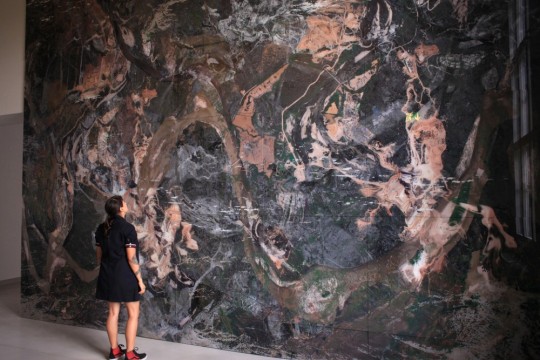
Lygia Clark
Baba Antropofágica
In collective works like «Túnel» or «Objetos relacionais,» Lygia Clark initiates psychic processes of exchange which transform the dichotomy of subject and object. In doing so, she follows the transgressive logic of «devouring» and «vomiting». The reception of «Baba antropofágica» («Cannibalistic Saliva») also relies on the documentary film «O mundo de Lygia Clark,» filmed by Eduardo Clark in 1973. But escaping this phantasmal staging of the body seems almost impossible: kneeling over a guinea-pig-like subject lying on the floor, a figure pulls from its mouth—like spiders do from their bodies—a spittle-drenched thread and spins a cocoon around the reclining figure. The precarious division of subject and object is eliminated by this thread-like weaving, with the gestural webbing of the passive subject completing the inversion of the internal and external. In the retrospective, these interactive aspects might have been what was most convincing. In contrast to Performance and Body Art, Lygia Clark understood herself to be an initiator of processes, and was most successful in this respect when her haptic attempts on orderings were targeted at inter-subjective body politics.


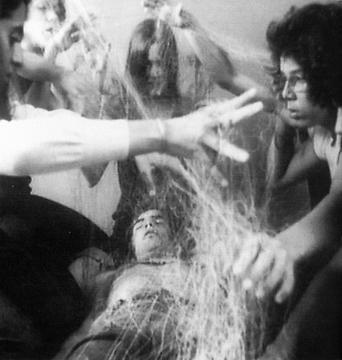
“¿Cuál es entonces la misión del artista?”, decía Clark, “Dar al participante el objeto que no tiene importancia por sí mismo y que sólo la tendrá en la medida en que el participante actúe. Es como un huevo que sólo revela su interior al ser abierto. (…) Es menester que la obra no cuente por ella misma y que sea un simple trampolín para la libertad del espectador-autor. Éste tomará conciencia a través de la proposición que le es ofrecida por el artista. No se trata de la participación por la participación, ni de la agresión por la agresión, sino de que el participante dé un significado a su gesto y de que su acto sea alimentado por un pensamiento, en ese caso el énfasis de su libertad de acción.” (1997: 152-153)
re-enactment
Short film records "Anthropophagic Slobber", proposal by Lygia Clark (1920 - 1988) (re)lived at Clark Art Center (CAC), Rio de Janeiro, Brasil, with Jards Macalé. Direction and screenplay: Walmor Pamplona. By Clark Art Center.
vimeo
she termed relational objects (everyday objects that the artist employed in an attempt used to stimulate the senses)
“Toward the end of her career, Clark coined another term, phantasmagoria of the body, which was also a way of intertwining art and psychotherapy. It’s a practice that deals with the notion of a life within an art object, something that scholars usually dismiss. It was through the discovery of her concept of the “phantasm” that Clark was able to surpass a mere anticipation of sensorial knowledge to enter the realm of actual fulfillment of that knowledge—a concept that differs from the contemporary notion of performance, and moves into the unconscious.
(...)
In Anthropophagic Slobber (1973) the ritualistic aspect of the proposition is crystal clear: a person lies on the floor, arms against her body. She doesn’t wear much. She rests, her eyes are closed. A group of people approach, they come, they kneel. They form a circle around the lying person and put colored threads inside their mouths—the threads are expelled from their lips wet, soaked with slobber. Saliva is stimulation. These people are then like spiders, depositing the webs on the person’s body. The spider can see the prone body—but only her “phantasm” can see the spider. It is within this kind of exercise that the object, a simple thread, becomes, for Clark, a powerful tool for the marriage between body and unconscious knowledge through art. When the person allows herself to become part of this embracing web, the slobber accepts her, she accepts herself.“ (from: https://artwriting.sva.edu/journal/post/lygia-clark-at-moma)
Vogue Germany January 2020
Images of a editorial photo shoot of the Voque Germany of January 2020, inviting artist Katharina Grosse as art director for the editorial fashion part. It’s called : Imagine (our title). She invited a platform of women ‘ Wir machen das’, writers, artists, architects, students, musicians to join the project. Their working field is migration, diversity and refugee movements in conversation with and over ….. The shoot shows divers types of women of different ages and shapes together in a shoot having conversations, also exposed in writings in the magazine.
https://wirmachendas.jetzt/en/mission/
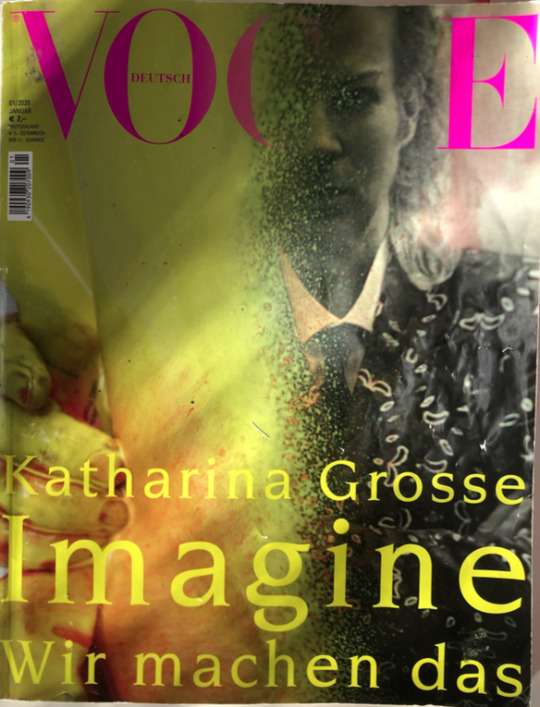
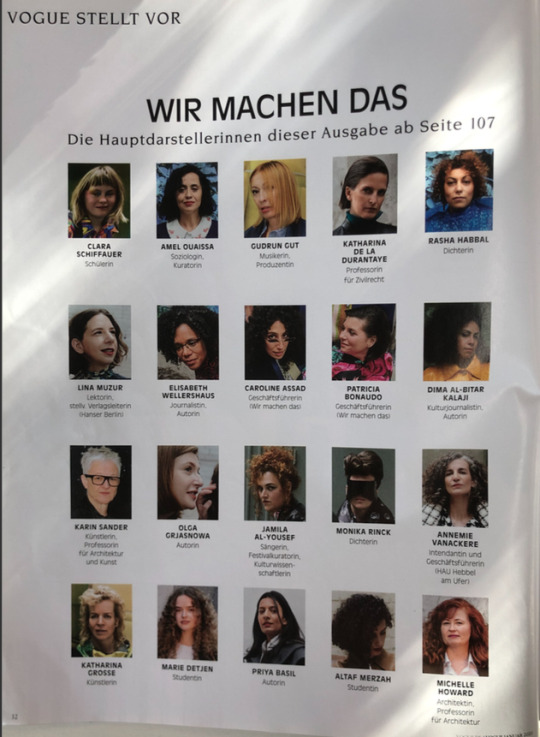

WIR MACHEN DAS – and this is who we are
WIR MACHEN DAS (WE ARE DOING IT) arose from a network of 100 women from arts and culture, science, journalism and public life under the association wearedoingit e.V. in 2015.
As a non-profit organisation we use various projects in the fields of arts and public relations to advocate for support, participation and the recognition of diversity in the context of refugee movements and migration.
Our Aims
We address all people not as “the needy”, but with regard to their expertise, because diverse perspectives enrich local discourses. Together we aim to improve career prospects, educational offers and networking opportunities. We foster individual resources and create opportunities for exchange. In this way, we bolster the involvement of people from zones of war and conflict. Together we are shaping a future in which immigration and diversity are seen as an opportunity and asset.
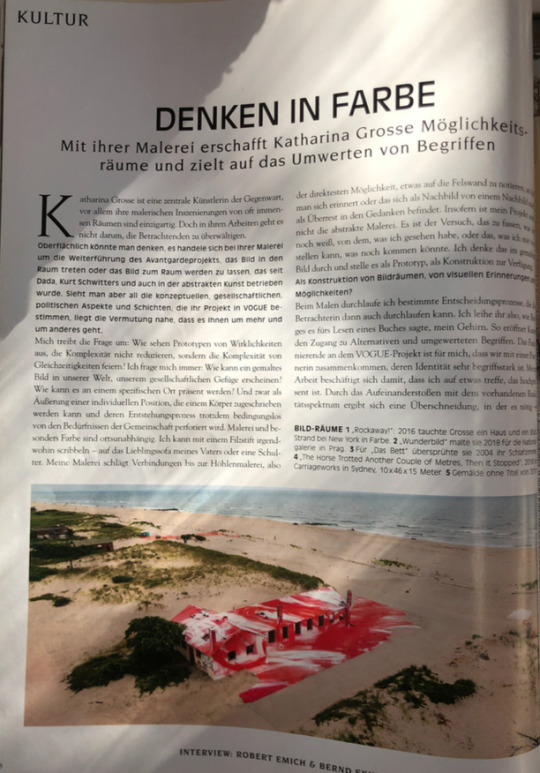


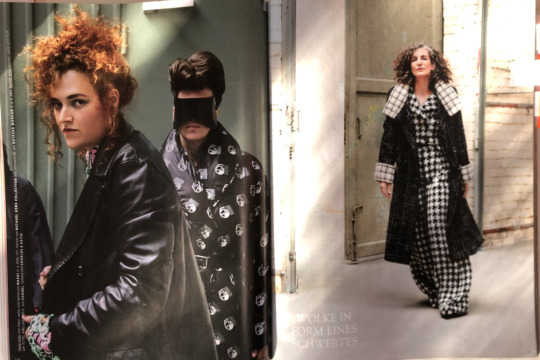
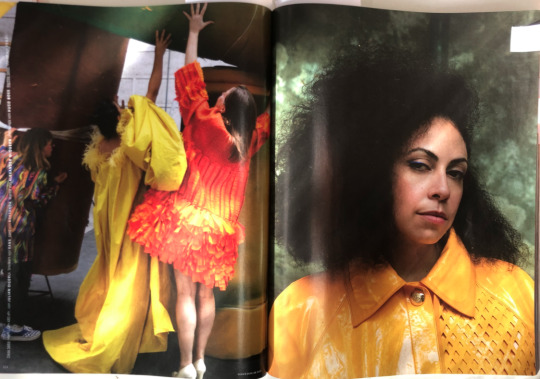
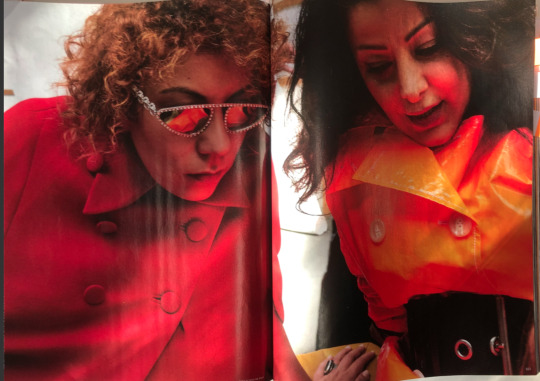



Plastic T-shirt bag invented to save the chopping of trees for paper bags in 1960
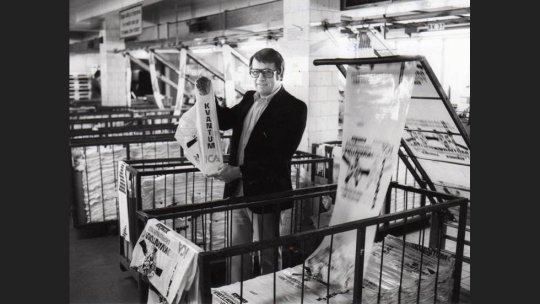
The inventor of the plastic bag Sten Gustaf Thulin. He intended the opposite with his invention:
American and European patent applications relating to the production of plastic shopping bags can be found dating back to the early 1950s, but these refer to composite constructions with handles fixed to the bag in a secondary manufacturing process. The modern lightweight shopping bag is the invention of Swedish engineer Sten Gustaf Thulin.[1] In the early 1960s, Thulin developed a method of forming a simple one-piece bag by folding, welding and die-cutting a flat tube of plastic for the packaging company Celloplast of Norrköping, Sweden. Thulin's design produced a simple, strong bag with a high load-carrying capacity, and was patented worldwide by Celloplast in 1965. As his son Raoul said later, Sten believed that durable plastic bags will be not single-used but long-term used and could replace paper bags which need chopping of trees.[7][8]
Source: https://en.wikipedia.org/wiki/Plastic_shopping_bag
https://www.independent.co.uk/environment/plastic-bags-pollution-paper-cotton-tote-bags-environment-a9159731.html
https://disposableamerica.org/the-plastic-bag/inventor-sten-gustaf-thulin/
Nzambi Matee

A nairobi-based 29-year-old entrepreneur and inventor — is the founder of a startup that recycles plastic waste into bricks that are stronger than concrete. called gjenge makers ltd, her company initiated following the development of a prototype machine that turns discarded plastic into paving stones. one day at the factory means 1,500 churned plastic pavers, prized not just for the quality, but for how affordable they are.
‘it is absurd that we still have this problem of providing decent shelter – a basic human need,’ said matee. ‘plastic is a material that is misused and misunderstood. the potential is enormous, but its after life can be disastrous.’
before creating gjenge makers ltd, nzambi matee majored in material science and worked as an engineer in kenya’s oil industry. in 2017 she quit her job to start creating and testing pavers, which are a combination of plastic and sand. she gets the waste material for free from packaging factories and also buys it from other recyclers. through experimentation, she understood which plastics bind better together and then created the machinery that would allow her to mass produce them.

‘we must rethink how we manufacture industrial products and deal with them at the end of their useful life,’ said soraya smaoun, who specializes in industrial production techniques with UNEP. ‘nzambi matee’s innovation in the construction sector highlights the economic and environmental opportunities when we move from a linear economy, where products, once used, are discarded, to a circular one, where products and materials continue in the system for as long as possible.’

Pierre Huyghe - Zoodram
Zoodrams: large aquariums with marine ecosystems, that embody the logic of the exhibition, in particular Zoodram 4 (2011) in which a crab turned a resin mask of the Sleeping Muse (1910) by Constantin Brancusi into its living habitat.


Zoodram 5 (After Sleeping Muse by Constantin Brancusi), 2011, a glass tank that provided living quarters for different species of crabs that cannibalize each other, a none-too-subtle metaphor for human rapaciousness.
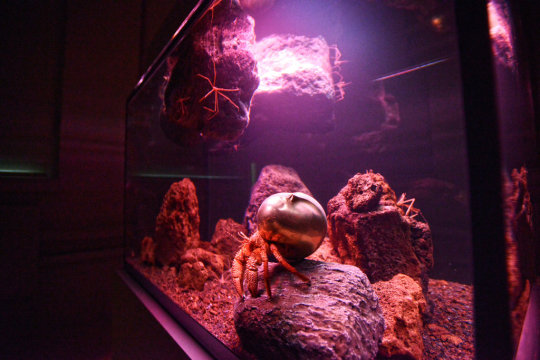
The tank is a repeated object in many of Huyghe’s works. They featured prominently in his retrospective, and a massive fish tank currently sits on the roof of the Metropolitan Museum as part of the Roof Garden Commission. Huyghe’s tanks are filled with strange, beautiful creatures. On the roof of the Met are tadpole shrimp, while inside the tanks in the retrospective were hermit crabs. The tank is an enclosed space. The viewer stands outside it, watching the creatures engage in their everyday activities. The tank is a lens through which we can better see Huyghe’s overall project. In an interview with Emily Nathan for Art in America, Huyghe stated:
The work is not “displayed” under a narrative — that’s a system I avoid. I could not imagine a chronological order, either. As you say, most of what I have done is construct situations that happen within a given body. Every one is a constellation network of process, all sorts of heterogenous and anachronistic things come together or are associated within a constructed situation, and so it is difficult to present them in a site where they were not originally, or to organize them in a linear way.
Pierre Huyghe says that life is the core interest of his practice: “I’m interested in how to quantify the different variations of being alive…how to intensify the presence of things.” Many of his performance, film, and installation pieces employ a range of living creatures—insects, plants, animals, and human beings—in order to explore their behavior and interactions. These works become laboratories for articulating complex social phenomena, the precarious distinction between fiction and reality, and contemporary belief systems.
Pawel Althamer
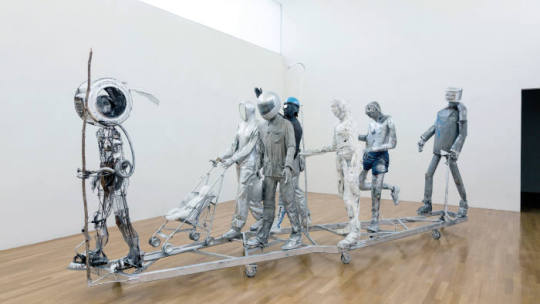
The sculptor Pawel Althamer, who had a cameo in After Nature with a pair of flayed bodies, has brought an entire parade of the undead to Expo 1. He and neighbours from his apartment block in Bródno, Poland, each created a life-sized alter ego, modelled out of scrap metal and technological trash. Like zombies from an apocalyptic nightmare, the figures in “Bródno People” march sightlessly through a huge gallery, an ungainly procession of solid ghosts that recalls Rodin’s “Burghers of Calais”.
Mel Chin
Revival Field

1991-ongoing plants, industrial fencing on a hazardous waste landfill an ongoing project in conjunction with Dr. Rufus Chaney, senior research agronomist, USDA
Revival Field began as a conceptual artwork with the intent to sculpt a site’s ecology. 1993 marked a successful conclusion to the first phase of this collaborative effort. The initial experiment, located at Pig’s Eye Landfill, a State Superfund site in St. Paul, Minnesota, was a replicated field test using special hyperaccumulator plants to extract heavy metals from contaminated soil. Scientific analysis of biomass samples from this field confirmed the potential of “Green Remediation” as an on-site, low-tech alternative to current costly and unsatisfactory remediation methods. Despite soil conditions adverse to metal uptake, a variety of Thlaspi, the test plant with the highest capacity for hyperaccumulation, was found to have significant concentration of cadmium in its leaves and stems.
vimeo
In Mel Chin’s Revival Field FIG. 3 soil is detoxified through the use of ‘hyperaccumulator’ plants in a dumping ground in Minnesota, demonstrating the need for speculative ecological proposals.
Thomas Hirschhorn
Jumbo Spoons and Big Cake




At first glance, Thomas Hirschhorn’s monumental installation Jumbo Spoons and Big Cake resembles a kind of documentation centre turned upside down, filled with papers, chained books, piled archives and photographs. In the centre, the jarring presence of a monumental cake surrounded by twelve giant spoons creates a metaphor on the state of the world today, and on the end of many 20th century utopias. Reminiscent of popular ‘souvenir spoon’ trinkets, the spoons portray individuals or entities that the artist associates with failed utopias: Mies van der Rohe, Rosa Luxemburg, Malevitch, Nietzsche, Venice, China, the Moon, firearms, fashion, the Nazis’ 1937 exhibition of “degenerate art,” Swiss Rolex watches, and the Chicago Bulls basketball team.
Tejal Shah
Between the Waves

Landfill Dance by Tejal Shah FIG. 5 is a video installation that involves several professional dancers dressed as quasi-mythical creatures, striking poses and moving in synchronicity in an unnamed mass landfill site in India. The work portrays ‘neither a neoliberal optimism nor paralysing despair’, but instead draws on the ‘potential of the bodies to coexist with this environment’, as is part of Boetzkes’s broader thesis that artists have demonstrated the need for an ‘intensive “working through” of the site’ and waste (pp.121–25). How, if at all, the work deals with people that notoriously have little choice but to rummage and work through mass garbage sites on a daily basis is unattended to.
Tejal Shah: Landfill Dance is part of the larger five-channel video installation, Between the Waves. Each channel also functions as a stand-alone piece. I first worked on channel 1, which is a longer film that forms the backbone of the installation.
“I am a big fan of contemporary and folk dance, with immense reverence for the medium. I have been eagerly awaiting an appropriate opportunity to collaborate with dancers. Finally, I decided to work with contemporary dance in this project to create seemingly nonsensical movements within the setting of a landfill to think about the futility of our gestures of sense making and recuperation in the Anthropocene (with a sense of humour of course!).” (https://huismarseille.nl/interview-tejal-shah/)
vimeo
vimeo
Olafur Eliasson
“Riverbed was for the Louisiana Museum, whose architecture is from a period where the seamlessness between inside and outside was introduced, as were a number of modern illusions of openness,” he says by way of preface. “Within this very contemplative museum, but also this very well functioning exhibition machine, I wanted something that would almost have the volume and scale to destabilise the museum a bit, pressure it. So I wanted it to look almost like a rock garden, but also to have a sense of a mudslide. Brutal, deathlike; it’s almost an alien landscape, and really it’s there to introduce destabilising qualities that one experiences outside – you’re walking on a slope, keeping your balance, recomposing your walking to fit the landscape – but you don’t really notice, you take them for granted. So I don’t only move the landscape in but also the microconflicts: suddenly we don’t take them for granted. This is what is interesting: the experience, the activities you do, also become exhibited. It’s as much about the interaction as about the actual plateau, the platform, on which people are walking.”



5 notes
·
View notes
Text
Class A Amps Explained & Compared: Valvet A4 Mk.II vs. Pass Labs XA30.5

After years of hearing about the benefits of Class A amplifiers, I finally got a taste in my system when the Valvet A4 Mk.II monoblocks arrived. Despite its cost and inefficiency, Class A operation has long been held as a gold standard of amplification by many in the high-end, Krell and Nelson Pass among its better-known evangelists. Different Class A amps have their distinct sonic character like any other amps, and no, Class A isn’t a guarantee of great sound. But one commonality I’ve heard from many of these big hot amps is a lovely naturalness and liquidity that came closer to tubes in capturing music’s tonal colors... as if all that bias current helped burn away the ills of solid state. Once I heard good Class A, many otherwise excellent Class AB amps seemed a bit bland and mechanical by comparison. This was borne out when the Valvet arrived while the excellent Bryston 4B Cubed was also in-house. While the powerhouse Bryston was a great amp in its own right, the Valvet just seems to have less electronic artifact and more musical blood flowing through its veins, to paraphrase an old colleague. I was hooked and craving more Class A, so I jumped at the opportunity to give the Pass Labs XA30.5 a try. Replaced by the XA30.8 a few years back, it’s an older design that became a bit of an icon as one of the more attainable ways (MSRP $5500) to achieve Class A nirvana. It makes for a fascinating design contrast with the Valvet - big American muscle vs. tidy German simplicity.
What is Class A again? 🤓
First, a quick refresher. “Class A” operation means the devices (in this case the output transistors of the amp, commonly MOSFET or bipolar [BJT] devices) have enough bias current applied to them to ensure they always stay conductive (“on”) throughout the entire voltage swing of the musical signal. Remember that transistors tend to behave like on-off switches that require a certain threshold current to become conductive. This non-linear behavior is called the transconductance curve, and the idea with Class A is you always have enough juice flowing to keep the device in the conductive, most linear part of the curve.

Non-linear transconductance (current vs. voltage) curve of a bipolar transistor (BJT). Amazing we can get good sound of of these things, eh? (Source: stackexchange.com)
In contrast, Class AB amplifiers utilize “push-pull” complementary (NPN/n-channel and PNP/p-channel) pairs of transistors taking turns handling the positive and negative swings of the musical signal. They will only apply enough current to keep both devices on for smaller signals, and as power increases one side of the push-pull will cease conducting while the other side takes care of business. This is a clearly a more efficient setup - no wasted power for a device that doesn’t need to be on - but one that does have one device always transitioning in or out of its ideal operating region. Even if it’s not doing the heavy lifting, it’s contributing non-linearity and this leads to distortion that typically requires some form of negative feedback to mitigate. (If you’d like to go a level deeper on the theory of all this, check out this tutorial.)
A couple observations that are obvious from a circuit perspective, but perhaps clouded by all the marketing speak in the audio biz. Firstly, virtually all single-ended audio amplifiers are Class A by definition, and all Class AB amplifiers are push-pull. There would be no point in designing a non-Class A single-ended amp for audio because it would distort massively whenever the signal exceeded its Class A bias range. Class A for push-pull means both devices are conducting all the time, but there is an interesting catch - if the output signal exceeds the amount of bias current to keep one side of the push-pull pair in its linear region, the amp still keeps working because the other device is conducting - it’s being pushed in the opposite direction on its transconductance curve, towards saturation (overload). This means unlike single-ended Class A, push-pull Class AB will simply start acting like Class B at high power levels. Secondly, not all Class A biasing is the same - yes, the device might be fully on, but how far into its operating region (where on the transconductance curve) has it been juiced? This is why e.g. when Pass Labs upgraded the XA30.5 to the XA30.8, they increased bias current significantly, resulting in an amp that was still rated at 30Wpc but used over 100 watts more at idle and weighed 25 lbs more.
Class A Power Ratings 🔌
With all that in mind, let’s look at the rated power of these two amps. The Pass Labs weighs 60 lbs/27 kg and is rated at 30 watts into 8 ohms, which is literally 1/10th the rated power of the similarly-sized Bryston 4B Cubed. The Valvet is rated at 55 watts into 8 ohms, with each compact monoblocks weighing 26 lbs/12 kg - it’s well under half the size and weight of the Pass. How can both be Class A, meaning they both operate at low efficiency, yet the Valvet is purportedly 83% more powerful in such a compact package? While I haven’t spoken with Valvet designer Knut Cornils about how he rated the power of the A4, Pass Labs is very clear that their 30Wpc rating is for fully Class A operation, but that the amp will continue delivering power with low distortion well past that. And indeed, when Stereophile measured the XA30.5 on the bench, it delivered 130 watts into 8 ohms and 195 watts into 4 ohms before hitting 1% distortion. Those famous Pass Labs bias meters (NOT power meters as on e.g. Macintosh amps) also tell you exactly when bias current starts to fluctuate, indicating the amp is leaving Class A. On my 92.5dB-efficient Audiovector SR 6 speakers, they would just start to wiggle on heavy bass notes or orchestral climaxes at high listening levels.

Valvet A4 power draw at idle. Double this for two monoblocks.
Since I wasn’t able to measure the actual bias current inside the amps, I took a look at idle power draw as a rough proxy. Though the Pass XA30.5 is rated at 238W at idle, I measured closer to 190W once fully warmed up; meanwhile, the Valvet monoblocks idled at around 90W each. So, pretty similar, which doesn’t mean their Class A biasing is the same (it depends on a host of other factors such as the voltage of the supply rails) but it hints to the Valvet not being “juiced” any more deeply into Class A despite its higher power rating. This is also borne out by the similar operating temperatures (toasty, but not burning hot) and the fact that the power supply in the Pass, while having less capacitance than the Valvet, likely has just as much (if not more) transformer muscle. I don’t know the rating of the Pass’s massive toroid but I suspect it’s more then double the 400VA in each Valvet.
With the caveat that this is conjecture based on the physical, electrical and sonic observations (more on those later), the Valvet’s 55 watts are likely closer to the 1% THD point where it has crossed over into Class AB, and not at full Class A. And as another point of comparison, I currently have the Gryphon Essence Class A power amp that’s rated at 50 watts Class A, and it weighs all of 100 lbs with an absolutely massive power supply. Just as all watts on amp ratings are not alike, neither are all Class A watts apparently.
Sonics 🎶
The Pass amp took some time to come out of its slumber after having been powered down for a while, but its famously warm, relaxed character was immediately discernible. After a couple days much of the initial “MOSFET mist” burned off and a wonderful synergy developed between Pass Labs amp, Audiovector SR 6 Avantgarde Arreté speakers and Furutech DSS-4.1 speaker cables. The XA30.5′s big tone, ripe bottom end and easy power nicely complemented the speed and range of the Audiovectors, requiring no softening or sugar coating from the exceedingly transparent Furutech wire. Compared to the Valvet, the Pass had a bigger sound with more generous bass that was borderline fat without ever getting sloppy. Interestingly the soundstage was noticeably wider as well, despite the Valvets being monoblocks which would ostensibly give them an advantage in channel separation. Vocals on the Pass were a little fleshier on a broader, more spaced stage, and dynamics felt a bit more grounded by that extra bass oomph.
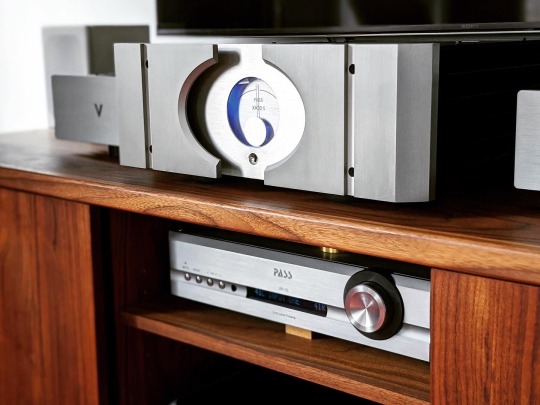
Pass’s XA.5-series styling certainly wasn’t known for its subtlety...
The Valvet counters with a faster, more incisive sound. One of the distinguishing features of the Valvet is the use of a single pair of transistors in the output stage. A number of manufacturers have been taking this approach as of late, including Pass in their XA25 amplifier which takes purism a step further by also eliminating the emitter degeneration resistors. The argument for such a simple topology is that no two transistors behave identically, and thus paralleling them causes some loss of fidelity as you can never get all of them at an identical ideal operating point and things kind of “average out.” The XA30.5 uses 10 pairs of MOSFETs per channel, and it’s only when you listen to the Valvet that you realize the Pass might have a few extra dancers in the troupe who aren’t quite as perfectly in lockstep with the music. The Valvet paints with a finer-tipped brush that can trace all the contours and curves of a musical line with great agility; the Pass doesn’t lack for resolution, but feels a tad slower and mushier, like a brush that has a bit of fuzz around it. This is particularly apparent in the upper frequencies where the Valvet has noticeably more sparkle and precision.
Tonally, both strike me as not deviating very far from neutral, but the Valvet has a subtle bit of upper midrange highlighting that methinks is in part due to its silver internal wiring. Silver tends to have a shinier sound to it, and when balanced well in a system it can really bring the details of a performance alive; but if not properly balanced, it risks sounding lean and forward. With the Valvet, the silver character is applied very judiciously, but I did find I needed to use more relaxed interconnects and speaker wires (e.g. Audience) to get the right overall tonality and perspective. The payoff is in the upper frequencies, where the Valvet makes the Pass sound a bit thick and cloudy by comparison. With a suitable source and preamp (the Gryphon Essence preamp was transformative in this respective), the tinkle of triangles and sheen of violins are presented with effortlessly clarity.
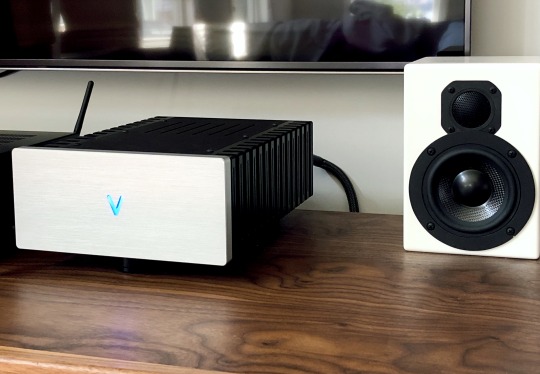
For reference, that’s a bookshelf speaker (Role Kayak) with 4″ woofers.
In terms of Class A qualities, both have wonderfully colorful midranges and a fair helping of liquidity and naturalness, but the Pass wears these quality more on its sleeve by sounding downright lush at times. It also maintains this warmth at higher volume levels where the Valvet can start to get a bit brighter and more strained, perhaps indicating where it’s leaving its Class A bias range. Where both excel is in conveying the lyricism of a tune or the palpability of an instrument or voice owing to their resolving, tonally complete midrange presentations. Both have a singing character that sounds and feels so organic and unencumbered vs. a typical Class AB amp. The Valvet does it with a slightly sharper focus on the lines around instruments and a bit more sparkle and dynamic alacrity; the Pass does it with a big, easy smoothness and weighty low end. Though the Valvet has no problem driving my full-range Audiovector speakers to satisfying volume levels, the Pass feels like it’ll be a bit more effortless and stable into a wider variety of speakers given its beefier output stage.
Going out on a limb: based on Gary Beard’s insightful remarks in Positive Feedback, methinks the Valvet might have more in common with the sound of the newer XA30.8. Gary’s observations of the XA30.5 align very closely with mine, and he describes the 30.8 as being more precise and incisive vs. the 30.5, similar to how I hear the Valvet vs. the 30.5. I would certainly expect the newer Pass to have more grunt than the Valvet given its even more massive power supply, but the Valet might capture some of the delicate qualities of the Pass XA25 as well. Both of those amps would make a really interesting comparison to the Valvet.
Closing Thoughts 🤔
Nit-picking power ratings aside, the Valvet A4 and Pass XA30.5 are both fantastically musical amplifiers that deliver plenty of the famed Class A magic with verve and character. It’s no coincidence that after the Valvet landed in my system, the next two amplifiers I’ve sought out - the Pass and the Gryphon Essence - are also Class A. This isn’t to say I’ll never go back to Class AB (and I’m actually expecting a Class D amplifier soon 😱), but after years of swearing I’d only seek out more practical amps that weren’t so ridiculously big and hot, the Class A bug has bitten me pretty hard. If tonal purity and musical nuance are top priorities for you, amps like the Valvet and Pass Labs deserve a spot on your audition list.
1 note
·
View note
Text
Friday night DJ
Well I am playing discs. Those black LP things.
Right now it is Dire Straights "brothers in arms". MOFI masters and all that hi end stuff. Oh and two glasses of Cabernet. I am really into this.
If anyone don't know MOFI for me is Vinyl with a capital V. No clicks. No skips. No FN noise. I challenge anyone to hear any of that. There is just the music that those punks put down on that island on the side of a volcano.
This is a digital recording and I don't care. It is on plastic here.
There are so many tiny things being thrown against the wall of my room. The music is wide and tall and I gotta say the BASS is exceptional. Yes there are drums, but there is the bass guitar too, it is right there.
Clarity.
Just before this was a Steely Dan side of Gaucho and before that two Box Scaggs albums. Even the wife got into it. She even let me turn it up just a bit.
All these are high end recordings for whatever that means. They are both great music and great technical recordings. That is the best combination. Oh "Why Worry" from DS B-i-A is really good. The downside of 180 g 45 rpm is you only get two songs per side. At least my sports watch is happy. Deep bass.
yes this is stream of consciousness from a very unstreamed music track. Shit that little drum just jumped at me. How do they do that depth thing.
"Ride across the river" is on now. Holly FN shit. This is a song strangely appropriate for our Day and Age. Freedom fighters dying. What I got is etherial grand music and sounds. Crickets and night sounds as well as a rock band. More jazz and I do not know what.
Hey I just turned the computer on so this is what is on the system.
This man's to strong is a song you have to hear in a good system. I compared the LP to a lossless stream and the stream lost. I wish I could accurately describe what I hear. That synth-guitar wa made for this media. Impact. Presence. Clarity.
Oh and the tube amp is in line droogs.
Phase linear 8000a II Turntable.
Audio Technica AT 7v with 440 stylus.
ARC SP 14 Preamp
ARC Classic 60 hybrid Tube amp (8x6550 tubes)
Stealth speakers.
#audiophile#high end audio#audioblr#cheap audiophile#vinyl#tubes vs transistors#turntables#audio research preamp#audio technica#phase linear 8000a
2 notes
·
View notes
Text
Biasing Tube Guitar Amplifiers
A customer, who owns a THD Flexi-50, recently asked me why our recommended bias is so much lower than the "commonly accepted 70% of maximum dissipation."
The following is my rather verbose response:
Let’s start out by stating that I am a proper amplifier designer, not a hobbyist who cuts and pastes from other designs, and gleefully repeats whatever he reads on the internet, as if it were fact. I’ve been at this for 50 years and have consulted for everyone under the sun in terms of sound, reliability, manufacturability, and just about every aspect of analog audio circuit design you can think of. I do amp repairs and restorations for dozens of multi-platinum rock bands, and I’ve often gotten that work because they see that the only amps they have that almost never need repair are their THDs. I’ve also helped Philips, Fluke and Hewlett-Packard design and build better test equipment based on my experience. I don’t even take proper textbooks as gospel, preferring to actually measure and analyze real-world situations, often proving PhD engineers and university department heads wrong in their assumptions.
Whoever started the myth that standard push-pull class AB1 guitar amplifiers (eg. Fender, Marshall, HiWatt, etc...) should be biased to 70% of maximum allowable tube dissipation should have sugar put in their gas tank. This is totally wrong in every way. There is no magic percentage of maximum dissipation to which one should bias, but most class AB1 audio amplifiers are happiest in the 35% to 40% range. (For the record, 70% is what is generally recommended for portable class B2 radio transmitters, and is close to what a class A1 amp wants.) It all depends upon the impedance of the output transformer primary, the load line of the output transformer, the impedance of the screen supply, and a few other, more esoteric factors that aren’t really worth getting into here.
People tend to repeat something that they read somewhere, as if it were truth, and it gets repeated and repeated until 95% of the hits on the internet are recommending something that was wrong to begin with. At times I find it frustrating.
That 70% factor also goes out the window when dealing with current production tubes, which are not designed to proper specs, but rather are made by reverse-engineering well-made old tubes and making countless assumptions as to why things were done the way they were. For instance, few of the Russian power tubes in production will work in a class-A amplifier. They tested their “designs” in Marshall 50-watt heads. If they worked for a few hundred hours, they gave the go-ahead to production to make 100,000 of them. Everyone who really understood how to design power tubes has been dead for 40 years, and their expertise died with them. Most people don’t spend their hard-earned money on NOS tubes because they sound better (some do, some don’t), they usually buy NOS tubes because they will sound good for 10 years of daily use as opposed to 1 year of daily use with current production stuff.
The purpose of biasing a class AB1 push-pull amplifier is to eliminate crossover distortion in the signal, plain and simple. This can be done with a distortion analyzer, but it does not differentiate crossover distortion from other types of distortion, so an oscilloscope is the best way of determining when crossover distortion has gone. When a tube is biased too cold, the signal from one tube (or tubes on one side) stops flowing before the signal from the other tube (or tubes on the other side) starts flowing, and this “gap” is called crossover distortion, as it occurs around the zero-crossing of the signal voltage. You bias a push-pull audio output section by first making it too cold on purpose, applying signal that is well below clipping, usually around 25% to 50% of clipping, and slowly increase the bias current (making the bias voltage less negative) until the gap at zero crossing is gone. When you have reached this point, you have attained the maximum dynamic range possible from the amplifier without the (very ugly-sounding) crossover distortion.
I got curious about where this point fell, as it could be a little bit ambiguous exactly where the crossover distortion “disappeared”, so I started writing down the no-signal (quiescent) dc current in the tubes where I was sure that it was gone. I documented this in roughly 10,000 amplifiers between 1969 and 1999. What I found was that, in high-powered class-AB1 amplifiers with properly designed output stages that ran their tubes near their voltage limits and had relatively linear load lines in the output transformers, the crossover distortion was sometimes gone by the time the bias was set to 21ma quiescent current per tube, often gone by 23ma, and always gone by 25ma quiescent current per tube.
One surprising thing is that it didn’t seem to matter at all what the tube type was. This number held true for 6L6, EL34, 6550, KT66, KT77, KT88, KT90, 7027A, 6CA7, 7591, 7868, USA, German, Dutch, British, French, it just didn’t seem to matter what the tube was, or who made it, as long as it was in this family of tubes that could deliver roughly 50 watts from a pair.
So, in order to make life easier for my techs, and to take some of the “guesswork” out of the biasing process, I determined that with all Marshall and HiWatt 50-watt and 100-watt amps, Fender 40, 50, 80 and 100-watt amps, and similar circuits, that they were to measure cathode current with no signal, and set the bias so that the tubes drew 25ma per tube with no signal. Then they had to do a listening test, to make sure that all was indeed well. On a few occasions the amps sounded bad at that rating, and when that happened, I took over to try to figure out why. Sometimes the two tubes were not matched, sometimes the output transformer was damaged on one side, sometimes the output transformer had been replaced with one that was not correct for the amplifier, sometimes the screen supply had too little or too much impedance. But, when things were as they should be, 25ma always gave a clean signal with no crossover distortion.
So, if your amplifier has maximum dynamic range at 25ma quiescent current per tube, what happens if you run it hotter, like 30ma or 40ma? Good question. First off, the noise floor comes up and, the tubes run physically hotter, which reduces tube life, the power and output transformers run hotter (due to the extra current running through them, even with no signal), increasing resistance in the windings, reducing overall output levels, and shortening the life of the transformers. As you can likely guess, the filter caps don’t last as long, either. I do know a few people who claim to prefer the sound of an amp biased to 40ma per tube, but these people almost always run full out, maximum distortion, 100% of the time, and never ride that expressive slope where clean gives way to “fat”, “fat” gives way to “crunch”, and “crunch” gives way to overdrive.
Another side of this is that the power supply and output stage can only deliver so much power before they just can’t deliver any more, and this is the maximum distorted full output. If you bias the output stage hotter than it needs to be, you are reducing the ratio of clean output to maximum overdrive output, and robbing the amplifier of dynamic range. Think of it like the idle in your car engine. If your engine redlines at 8000 RPM and will idle smoothly at 400 RPM, you have a ratio of 20 to 1 in terms of “dynamic range” when it comes to acceleration and general driving characteristics. You always want your idle as low as you can get it and still have it running smoothly. You can set the idle at 2000 RPM, but you will only have a dynamic range of 4 to 1, and will be shifting gears a LOT more often to get to speed. Also, you’ll be burning a lot more fuel and fixing your car a lot more often.
Biasing your amplifier to 70% of maximum plate dissipation is like setting your car’s idle to 5600 RPM with a redline of 8000 RPM. You’ll be rebuilding your engine (or replacing power tubes, filter caps and transformers) a lot more often.
I have a lot of customers who have amps worked on (under warranty) by other companies (as I only do warranty work on THD amplifiers), and then bring them to me for biasing, as everyone else seems to bias them too hot, and then their tubes don’t last very long, their amps sound overly compressed and “mushy”, and they hum too much.
It is perfectly safe for your Flexi-50 if you want to try running your bias a little bit hotter. I would not recommend going above 40ma per tube, though.
6 notes
·
View notes
Text
WELLS AUDIO V8 LEVEL II TUBE HEADPHONE AMPLIFIER REVIEW
Wells Audio V8 Level II Tube Headphone Amplifier Once again Jeff Wells has shown that he can make a great amplifier whether solid-state or tube, and the Wells Audio V8 Level II Tube Headphone Amplifier has proven to be one of the better OTL amplifiers I have heard, with excellent detail, solid imaging, a linear tonal balance, a large soundstage, fantastic dynamic range and above all musicality.…

View On WordPress
0 notes
Photo

How Class D Amplifiers Work
Class D amplifiers refer to Class D audio power amplifiers (sometimes called digital amplifiers). By controlling the ON / OFF of the switch unit, the amplifier driving the speaker is called a Class D amplifier. Class D amplifiers were first proposed in 1958, and have become increasingly popular in recent years. It has been available for many years. Compared with the general linear AB power amplifier circuit, the D power amplifier has the characteristics of high efficiency and small size.
The design considerations of Class D amplifiers are completely different from those of AB amplifiers. At this time, the linearity of the power amplifier tube is no longer significant, the more important switching response and saturation voltage drop. Because the pulse frequency processed by the power amplifier tube is dozens of times of the audio signal, and it is required to maintain good pulse front and back edges, the switching response of the tube is better. In addition, the efficiency of the whole machine lies in the pipe consumption caused by the saturation pressure drop of the pipe. Therefore, not only the saturation tube pressure drop is high, the heat dissipation structure of the power amplifier tube can also be simplified. A few years ago, the high-frequency and high-power tube was expensive, which limited the development of Class D amplifiers to a certain extent. Now MOSFETs with low current control and high current have been widely used in the industrial field, especially UHC MOSFETs have been applied to Hi-Fi power amplifiers in recent years, and the obstacles of the device have been eliminated.
Modulation circuit is also a special link of class D power amplifier. To modulate audio below 20KHz into a PWM signal, the frequency of the triangle wave must reach at least 200KHz. If the frequency is too low to meet the same THD standard, the requirements for the components of the passive LC low-pass filter are high and the structure is complicated. The frequency is high, the jaggedness of the output waveform is small, it is closer to the original waveform, and the THD is small. In addition, the filter can be made of inductors and capacitors with low values, small size, and relatively poor accuracy requirements, and the cost is reduced accordingly. However, at this time, the switching loss of the transistor will increase as the frequency rises. The high-frequency loss in the passive device and the skin effect of the radio frequency will reduce the overall efficiency. Higher modulation frequencies will also cause radio frequency interference, so the modulation frequency cannot be higher than 1MHz.
At the same time, the shape of the triangular waveform, the accuracy of the frequency, and the jitter of the clock signal will affect the distortion of the recovered signal that is different from the original signal. So to achieve high fidelity, many of the same considerations as digital audio fidelity have arisen.
Another factor that has a lot to do with sound quality is the passive filter located between the drive output and the load. The low-pass filter works under high current, and the load is the speaker. Strictly speaking, the impedance change of the speaker should be taken into consideration when designing, but it is not feasible to specify the speaker as an amplifier product, so the combination of Class D amplifier and speaker is more enthusiastic. It is actually proved that when the distortion requirement is below 0.5%, the second-order Butterworth flattened response low-pass filter can meet the requirements. If higher requirements are required, a fourth-order filter is required. At this time, issues such as cost and matching must be considered.
In recent years, general-purpose Class D power amplifiers already have integrated circuit chips, and users only need to design low-pass filters as required.
AIYIMA
Focus on Audio
1 note
·
View note